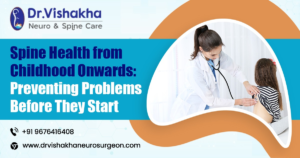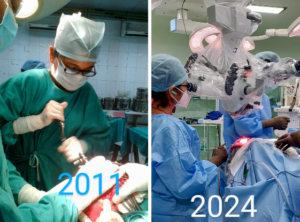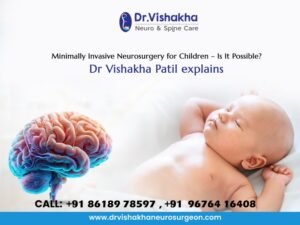Yes, Craniosynostosis can be hereditary, passing down through families through genetic mutations, but the exact cause is unknown and occurs sporadically. A genetic predisposition can increase the risk significantly, especially when associated with specific genetic syndromes like Apert, Crouzon, or Pfeiffer syndromes. However, not all cases are hereditary, as the condition involves premature fusion of cranial sutures. Approximately 25% of cases have a genetic origin, often involving mutations in specific genes like FGFR2, FGFR3, TWIST1, and EFNB1. These genetic forms often exhibit autosomal dominant inheritance, but about half of the genetically determined cases are due to new mutations. Syndromic Craniosynostosis, which involves extracranial anomalies, is more likely to have a genetic cause compared to non-syndromic forms.

Types of Craniosynostosis
Syndromic Craniosynostosis
Genetic syndromes, such as Apert Syndrome, Couzon Syndrome, Pfeiffer Syndrome, Saethre-Chotzen Syndrome, and Craniofrontonasal Syndrome, are caused by specific gene mutations and are often inherited in an autosomal dominant pattern. If a parent has a syndromic form, their child has a 50% chance of inheriting it. Some cases also arise from de novo mutations. The heredity of these syndromes is high, with a 50% chance of inheritance if a parent is affected.
Nonsyndromic Craniosynostosis
Craniosynostosis is a rare genetic disorder with low heredity, often occurring randomly with no family history. Environmental factors like fetal positioning and certain medications may contribute. Some studies suggest multifactorial inheritance, combining genetic predisposition and environmental influences. A small percentage of non-syndromic cases run in families, with a recurrence risk of less than 2%.
Treatment of Hereditary Craniosynostosis
Surgical treatment for Associated Conditions involves expanding the skull to allow normal brain growth, improve appearance, and relieve intracranial pressure. It is typically performed between 6-12 months of age, with severe cases requiring earlier intervention. Types of surgery include Cranial Vault Remodeling (CVR), Endoscopic-Assisted Strip Craniectomy, Fronto-Orbital Advancement (FOA), and Monobloc Advancement & Le Fort III Osteotomy. CVR is recommended for severe skull deformities, FOA moves forehead and eye sockets forward, and Monobloc Advancement corrects midface hypoplasia in cases like Crouzon and Apert Syndromes. Supportive treatments include breathing support, vision care, hearing support, speech and developmental therapy, and dental and orthopaedic care.

Prognosis of Hereditary Craniosynostosis
The prognosis of a skull fusion depends on early diagnosis, severity of skull fusion, and associated syndromic conditions. Factors affecting prognosis include early surgery, mild cases like Saethre-Chotzen Syndrome, severe cases like Apert and Pfeiffer Syndrome, and life expectancy. Mild cases have good cognitive and physical outcomes, while severe cases may have developmental delays but can live fulfilling lives with therapy and support. Long-term outcomes vary by syndrome, with some having intellectual disabilities while others have normal intelligence but may have vision, breathing, and hearing issues.
Dr Vishakha recommends genetic counselling for families with hereditary Craniosynostosis. The risk of recurrence is 50% if a parent carries the gene mutation, while de novo mutations have lower risks. Prenatal testing options like Chorionic Villus Sampling (CVS) or Amniocentesis can detect known genetic mutations, aiding families in informed decisions about future pregnancies and understanding recurrence risk.
Dr. Vishakha Patil’s Explanation:
Craniosynostosis is a congenital disability where skull sutures fuse too early, causing an abnormal head shape. Surgical intervention is usually necessary to correct the cranial deformity and support optimal brain growth. Dr. Vishakha Patil, a neurosurgeon with decades of experience, provides clear, evidence-based, and patient-friendly explanations of the condition. She focuses on the causes, genetic factors, diagnosis, treatment, and family counselling to help parents understand the condition better. The skull is made of several bones connected by sutures, allowing normal brain expansion in infancy. When sutures close too soon, it can lead to abnormal skull development, increased brain pressure, and facial asymmetry. Craniosynostosis can be hereditary, often linked to specific genetic syndromes, but many cases lack a known cause, so consulting a healthcare professional or genetic counsellor is recommended.
About Dr Vishakha:
Dr Vishakha is a highly skilled senior consultant at Rainbow Children’s Hospital in Banjara Hills and Hydernagar Hyderabad. She is known for her comprehensive care approach and is one of the few dedicated leading paediatric neurosurgeons in the city and India with over ten years of extensive experience in pediatric neurosurgery. Her expertise includes treating hydrocephalus, spinal dysraphism, craniosynostosis, paediatric brain infections, brain and spine tumours and stroke surgery. She has a special interest in craniosynostosis surgery, which is done only in very few centres in India.
Proficiency of Dr Vishakha:
-
- Hydrocephalus (increased fluid in the brain): The procedure involves an endoscopic third ventriculostomy and CSF diversion (VP shunt) to treat complex hydrocephalus.
- Craniosynostosis (abnormal head shape due to untimely cranial sutures fusion) surgeries: Helmet therapy is a technique that is used in both endoscopic and open surgery.
- Spinal dysraphisms(Spina Bifida)- (spinal abnormalities present by birth) – surgical repair
- Encepahaocles repair surgery.
-
- Vascular conditions and stroke surgeries: revascularization surgeries for moya moya disease.
- Pediatric brain and spine tumour surgeries.
-
- Pediatric brain and spine infection surgeries: Endoscopic and open surgeries for brain and spine infections.
- Pediatric traumatic brain and spinal injury.
- Antenatal counselling for congenital fatal neurosurgical conditions.





